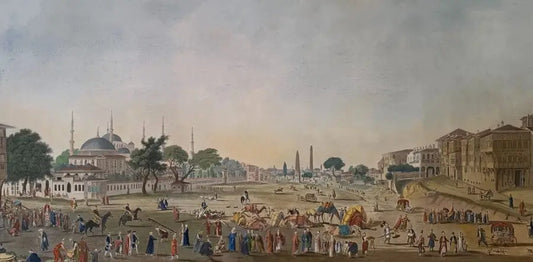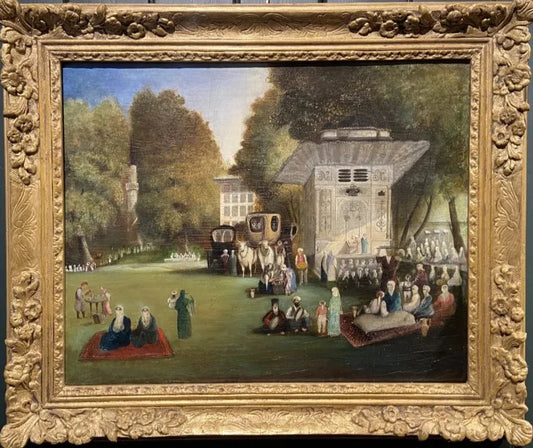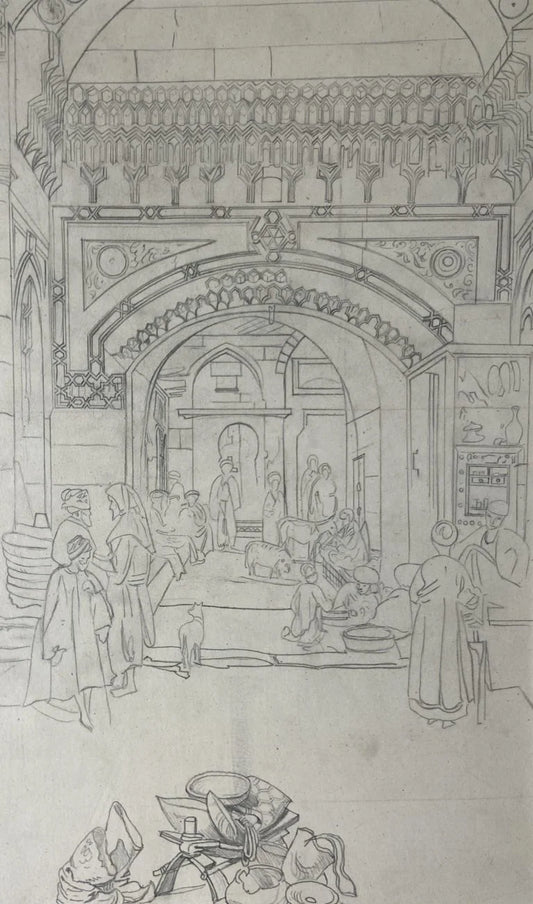Orientalism refers to the 19th century artistic movement of French origin that depicted scenes from North Africa and the Middle East. The movement is dominated by the painted medium, and consists of a number of polarised intentions. Some artists depicted sensuous, romanticized and exoticised scenes of harems, hookah smoking, lounging women, violent battles, slaves, and prisoners. Others sought to depict life in the Orient in minute detail as a sincere representation of the traditions and lifestyles of non-European cultures.
The emergence of Orientalism is tied to French colonisation of Egypt and North Africa. Until Napoleon’s short lived occupation of Egypt, Europe had only experienced contact with the Middle East through trade and conflict. As the power of the Ottoman Empire dwindled in North Africa, European powers - such as France and Britain - emerged to fill the power vacuum. France in particular employed artists, such as Antoine-Jean Gros, to accompany military and scientific expeditions within their newly acquired territories, aiming to produce a visual record of the unique cultures, traditions, peoples and architecture to show those at home in mainland France.
These images stirred sentiments of adventure and curiosity within Europe, where the Romanticist movement was well underway and had already contributed to a privileging of the unknown, the exotic, and the natural world. European travellers - particularly those from France, Britain and Germany - travelled to these intriguing new lands. Many of these artists lived in the East for extended periods, producing a myriad of sketches and studies to be transformed into a painted scene upon return to Europe. Artists considered to be French Orientalist Masters include Eugene Delacroix, Theodore Gericault, Jean-Leon Gerome and Eugene Gerardet.
Other artists who painted Orientalist scenes had, rather shockingly, never visited the East. Instead, they relied on sketches, studies and traveller’s souvenirs to provide information and inspiration for their own compositions. These paintings often resulted in an amalgamation of cultures - for example, a Turkish rug under the feet of a woman in Algerian dress - that were aimed solely at satisfying the customers taste for anything that looked Oriental, rather than realistic representations of the Middle East.
As it was French colonisation that started the Orientalist movement, France is often heralded as the birthplace of the Orientalist School. Works inspired by the East had a strong presence at the Salon des Artistes Francais, but eventually became so commonplace and generic that the public fell out of love with Oriental art - it was simply not as intriguing and exotic as it once had been.
The French school focused on highly dramatised and exoticised scenes, such as those in the works of Jean-Auguste-Dominique Ingres - an aesthetic that was still apparent within the British Orientalist school, but was not its main focus. Instead, the British artistic interest in the Middle East was predominantly due to the region being the Christian Holy Land. Artists including David Roberts, Edward Lear, William Holman Hunt and Richard Dadd travelled to Palestine, Egypt, Persia, Arabia and Syria to visit the sites mentioned in scripture, creating topographical and architectural studies for future religious paintings. A smaller but nonetheless noteworthy subset of British Orientalists, who included John Frederick Lewis, painted diligent scenes of contemporary Islamic or tribal life. As with in France, Orientalist scenes soon became a mundane sight at the Royal Academy and Orientalism fell out of favour in Britain as well.
Smaller Orientalist schools were present in other European countries, which produced other Orientalist Masters - for example, the Belgian Jean-Francois Portaels, the German Carl Haag, the Spanish Maria Fortuny, the Austrian Francesco Beda, and the American Edwin Lord Weeks.
Interest in collecting Orientalist artworks has surged in recent years with the growth of the Middle Eastern art market. Prized for their vibrant colour, extravagant sensuosity and luxurious scenes, Orientalist works are a must-have for collectors of pre-contemporary art. They depict the Middle East and North Africa pre-modernisation, pre-excavation of archaeological sites, and pre-technology - the nostalgia for this historic era of discovery is a sentiment that appeals to all of us.



























